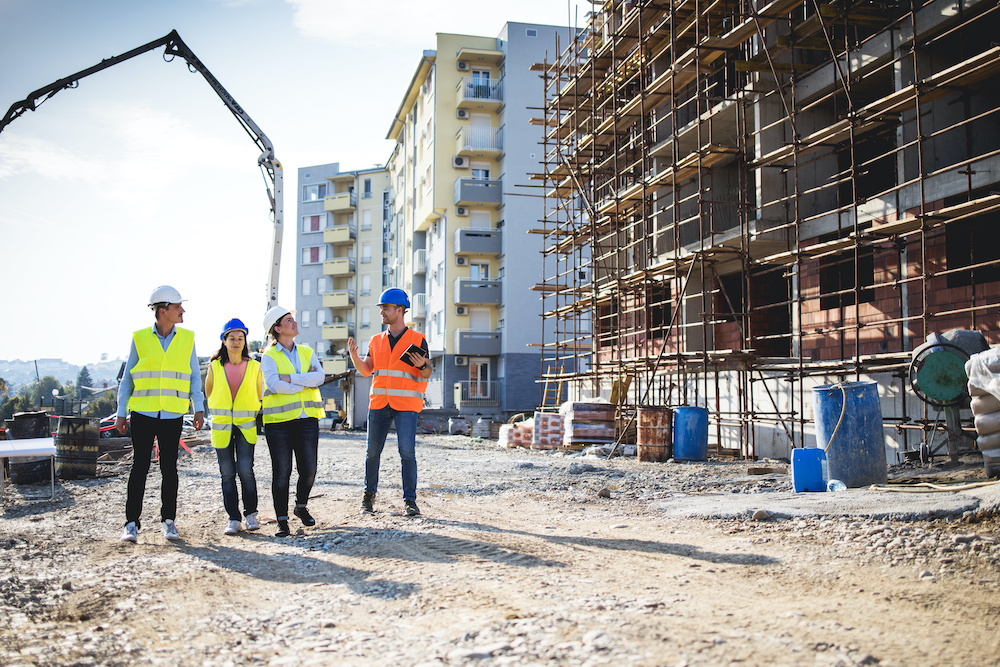The construction industry is one of the business sectors that have had to deal with the price of inflation. | Adobe Stock
The construction industry is one of the business sectors that have had to deal with the price of inflation. | Adobe Stock
Inflation is starting to concern many economists across the country, while its impact on Gwinnett County is still uncertain.
The U.S. Bureau of Labor Statistics (BLS) reported that wages in Gwinnett County have failed to stay on par with the national average, rising to 10.2% compared to 13% nationally.
The state ranked 42nd in the country by percent change and 23rd by level in the report that compared 2019 to 2020 data.
In an article for the Peterson Institute for International Economics (PIIE), Harvard economist Jason Furman, former chairman of the Council of Economic Advisors and economic advisor to President Barack Obama, and Wilson Powell III, former PIIE research analyst, said paychecks aren't going as far as they used to. June saw real compensation fall 0.7% below the levels of December 2019 and 2% lower than its pre-pandemic movement, according to the article.
The U.S Bureau of Labor Statistics reported that compensation for Americans rose to a 2.8% annual rate. Due to inflation, however, in many industries real compensation is down by 2% since before the pandemic began.
The biggest culprit is that inflation has caused prices to rise at a faster rate than wages, resulting in inflation-adjusted compensation declining for the past three months below its December 2019 level, according to the PIIE article.
Real compensation depends on a litany of variables, according to the PIIE article, including, “(i) the tightness of labor markets, which are likely to experience increases in both labor demand and labor supply over the next six months (although not necessarily monotonically given the rise of the Delta variant); (ii) whether employers adjust compensation growth up to reflect the higher inflation, something that was standard in contracts and bargaining in earlier periods of high inflation but has largely been absent for several decades; and (iii) the outlook for inflation, in particular, whether it persists well above the historical expectation of 2 percent annual growth.”
The rise of inflation in comparison to pre-pandemic levels has seen the consumer price index rise at a 10% annual rate with business sectors, apart from leisure and hospitality seeing real compensation fall below the trend level, according to the BLS.
In an article for The Hill, Kristin Tate, libertarian writer and an analyst for Young Americans for Liberty, said there are two significant forces contributing to current inflation: “Money printing by the Federal Reserve” and “massive government spending.”
Tate called the growing inflation “Biden’s hidden tax on working Americans.”
After the recent passage of the $1 trillion infrastructure bill, one its authors, Majority Leader Chuck Schumer, and other Senate Democrats said that the bill would be "fully paid for," according to The Wall Street Journal. However, the nonpartisan Congressional Budget Office said that the bill would contribute $256 billion to the federal deficit over 10 years, the newspaper reported.
Members of the bipartisan group that negotiated the infrastructure bill said they expected the analysis from the Congressional Budget Office to differ from their own and said some of the measures to cover the cost of the bill wouldn’t count the same way toward CBO’s official estimate, The Wall Street Journal said.
Inflation trends won’t come close to previous periods of inflation, according to Mark Vitner, a senior economist for Well’s Fargo’s Corporate and Investment Bank.
“Most of the run up in inflation that we are seeing is due to some temporary supply shortages and bottlenecks in the supply process because one or two key parts are messing, such as semi-conductor chips,” Vitner said, according to The Business Journal.



 Alerts Sign-up
Alerts Sign-up